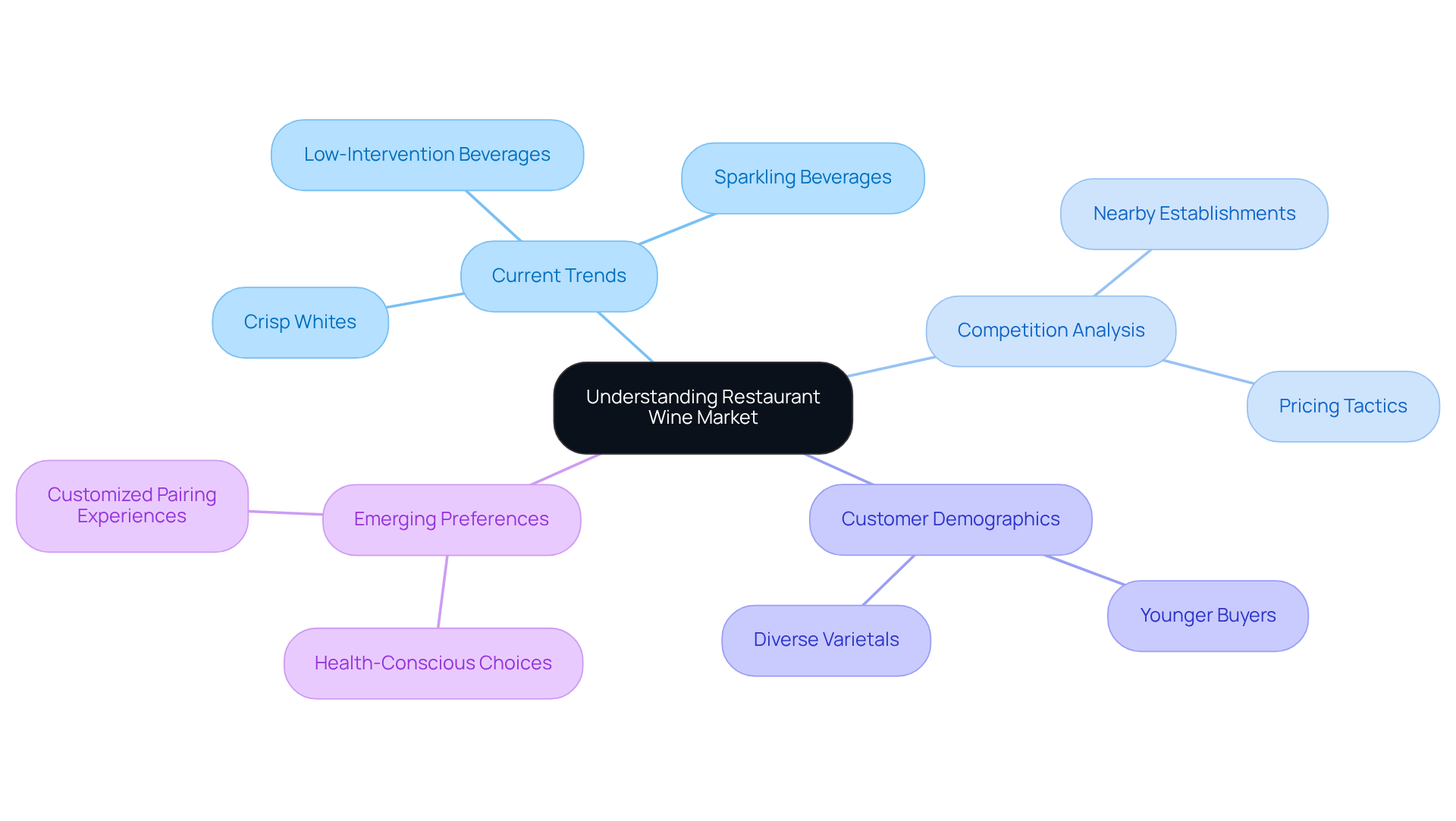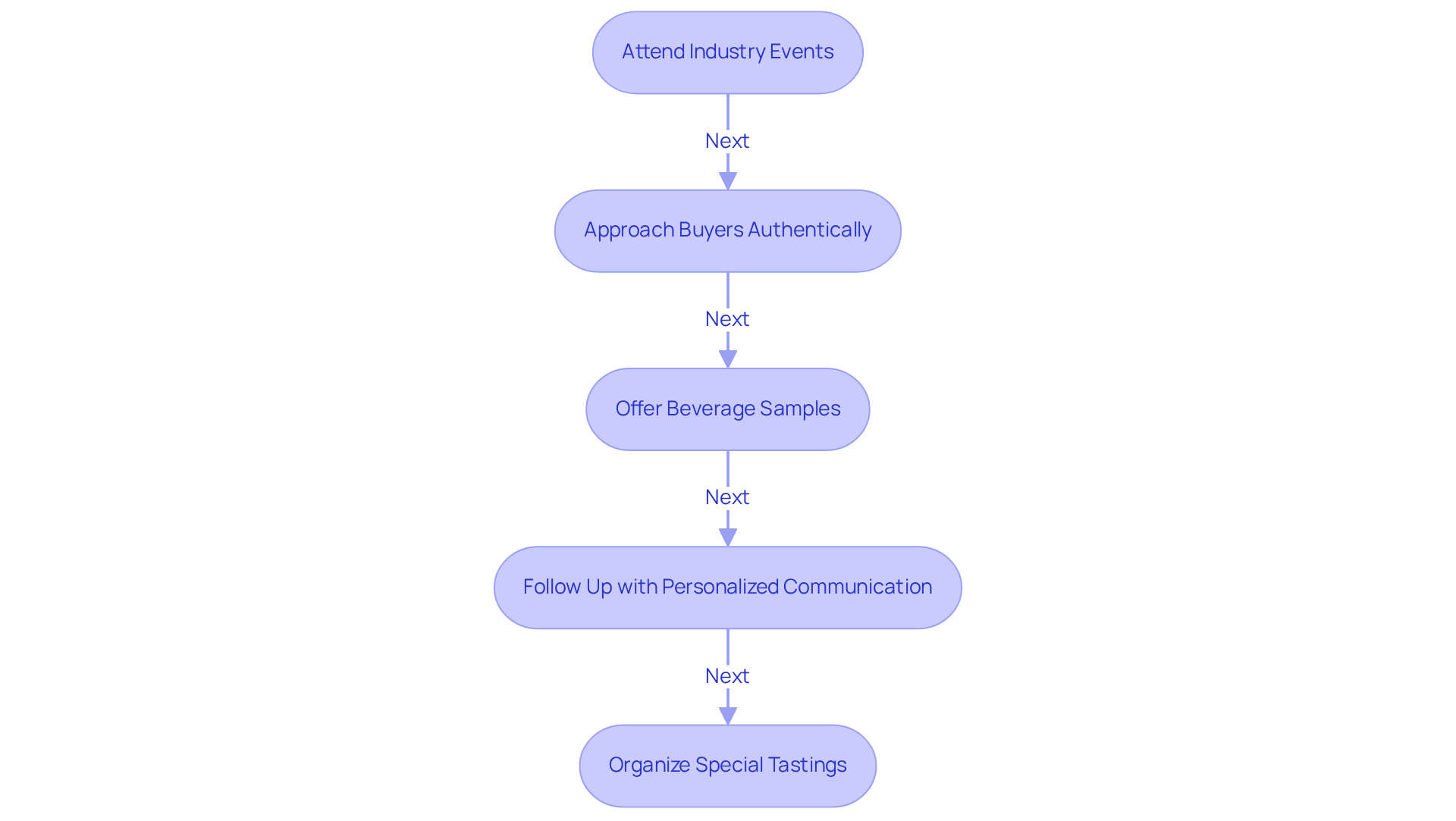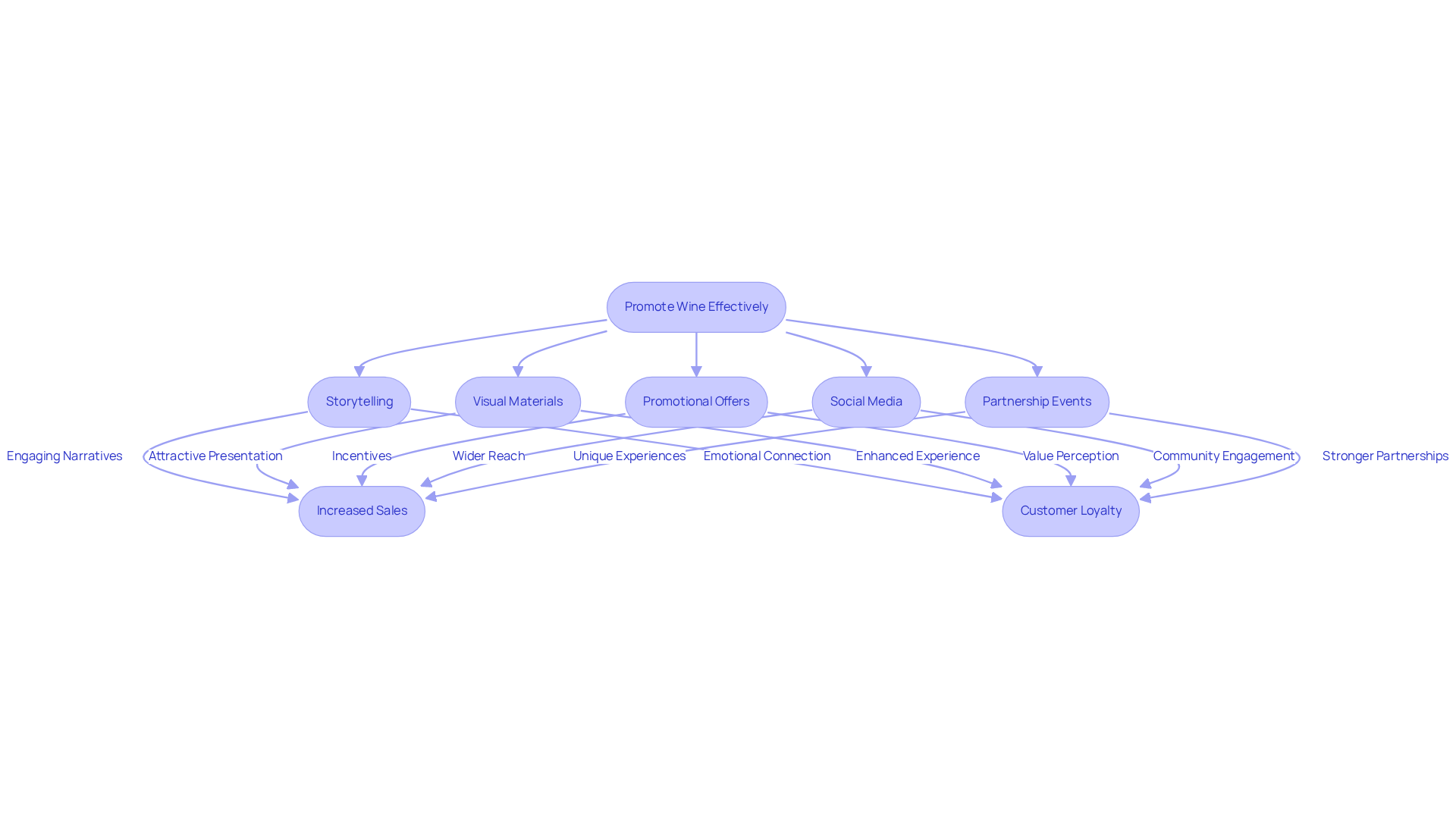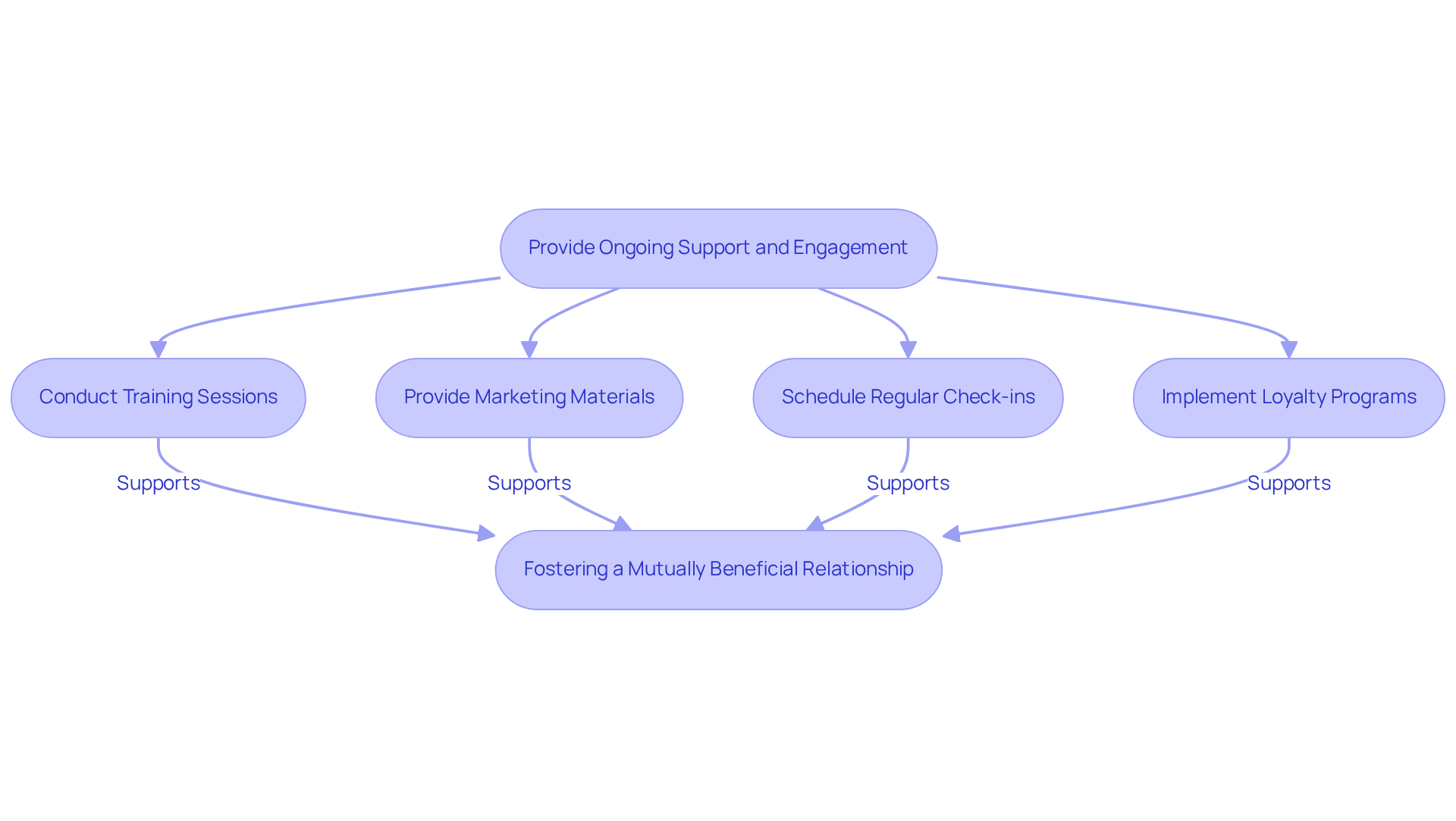Overview
To successfully sell wine to restaurants, it is imperative to cultivate robust relationships with decision-makers, grasp market trends, and promote products through compelling storytelling and continuous support. Engaging restaurant buyers through personalized interactions, providing staff training, and sharing captivating narratives about the wine not only enhances sales but also fosters enduring partnerships. By implementing these strategies, sellers can significantly elevate their influence in the market and establish a strong foothold in the competitive landscape.
Introduction
Understanding the nuances of the restaurant wine market is essential for anyone aiming to successfully sell wine to dining establishments. As consumer preferences evolve, with a notable shift towards crisp whites and low-intervention options, a significant opportunity arises for wine suppliers to align their offerings with these trends. Yet, a pressing challenge persists: how can one effectively cultivate relationships with restaurant buyers and promote their products in a manner that distinguishes them in a crowded marketplace? This guide explores the strategies and techniques vital for fostering connections and enhancing wine sales to restaurants, ensuring that both suppliers and dining establishments benefit from a flourishing partnership.
Understand the Restaurant Wine Market
Understanding the current trends in the restaurant beverage market is paramount when learning how to sell wine to restaurants successfully. In 2025, consumers favor crisp whites and sparkling beverages, which continue to outpace broader industry performance due to their versatility and refreshing qualities. Additionally, low-intervention beverages are gaining traction, appealing to health-conscious diners seeking genuine and sustainable choices.
Analyzing the competition is essential. Explore nearby dining establishments to scrutinize their beverage selections, noting their pricing tactics and the specific varieties of drinks they offer. This analysis will yield insights into how to sell wine to restaurants by understanding what resonates with their clientele. Understanding the demographics of a restaurant's customers is equally crucial for knowing how to sell wine to restaurants, as it directly influences their beverage preferences. For instance, younger buyers are more inclined to explore diverse varietals and are drawn to beverages with compelling narratives behind them. As Vanni emphasizes, "Story is very important. That’s how individuals recall beverages."
Utilize industry reports and market analyses to gather data on beverage consumption trends and emerging preferences among diners. A significant segment of diners now seeks customized beverage pairing opportunities, indicating a shift towards more engaging dining alternatives. Indeed, beverage enthusiasts will increasingly pursue customized pairing experiences, underscoring the importance of adjusting offerings to meet consumer preferences. By leveraging this foundational understanding, you can effectively learn how to sell wine to restaurants, ensuring your beverages align with the evolving expectations of dining patrons.

Build Relationships with Restaurant Buyers
To effectively market beverages to eateries, it is essential to know how to sell wine to restaurants by identifying key decision-makers, including beverage purchasers and establishment managers. Attend industry events, beverage tastings, and local food festivals to connect with these influential individuals.
When approaching restaurant buyers, authenticity is paramount; express genuine interest in their establishment and its unique offerings. Offering samples of your beverages can foster conversations about how to sell wine to restaurants and how your selections can enhance their beverage list. Notably, studies indicate that beverage sales can increase by 30-50% when suggested recommendations are featured on the menu, underscoring the significance of these interactions.
After your initial meeting, follow up with a personalized email or phone call to express gratitude for their time and reiterate your interest in collaboration. Building rapport is a gradual process; therefore, patience and consistency in your outreach are crucial.
Consider organizing special tastings or events for dining personnel to show them how to sell wine to restaurants, allowing them to experience your beverages firsthand and establishing a lasting connection that can lead to future sales opportunities.
As Scott Sheridan observes, the enhanced information exchanged through beverage descriptions or pairing suggestions can elevate customer engagement, making networking not merely about establishing connections but about nurturing relationships that can profoundly influence sales in the competitive dining sector.

Present and Promote Your Wine Effectively
To effectively showcase how to sell wine to restaurants, prioritize storytelling as a means to connect with consumers and drive sales. Articulate the unique aspects of your winery, the intricacies of your winemaking process, and the distinctive characteristics of your products through compelling narratives. Create visually appealing materials, such as brochures or digital presentations, that highlight your products' characteristics, including tasting notes, recommended food pairings, and competitive pricing.
Consider introducing promotional offers, such as discounts for first-time orders or incentives for bulk purchases, as strategies for how to sell wine to restaurants and attract buyers. Utilize social platforms and online promotion to enhance the visibility of your products, highlighting them in use at eateries or during occasions. Partner with eateries to organize unique pairing dinners or themed events that showcase your products while also teaching them how to sell wine to restaurants, giving diners a memorable chance to experience your beverages directly.
This method not only boosts brand awareness but also nurtures stronger ties with dining partners, ultimately increasing sales and customer loyalty. By crafting stories that resonate and strategically planning your promotional efforts, you can transform casual buyers into loyal club members, ensuring the growth and sustainability of your winery.

Provide Ongoing Support and Engagement
To cultivate a successful collaboration with dining establishments, it is essential to learn how to sell wine to restaurants by maintaining consistent communication and ensuring their satisfaction with your beverages. Conducting comprehensive training sessions for restaurant personnel is vital, as it equips them with the knowledge necessary on how to sell wine to restaurants effectively. For instance, regular staff tastings can enhance their understanding and enjoyment of the beverages, leading to more confident recommendations to patrons. A well-prepared team can confidently suggest beverages, increase average ticket size, and elevate customer satisfaction, making training on how to sell wine to restaurants a critical investment for both parties.
Additionally, providing marketing materials, such as table tents and social media graphics, can further bolster their promotional efforts when considering how to sell wine to restaurants. Scheduling regular check-ins allows you to collect valuable feedback and address any concerns, thereby reinforcing the relationship. Consider implementing a loyalty program or offering incentives for restaurants that consistently order your wines. This strategy not only encourages repeat business but also nurtures a sense of partnership. By delivering ongoing support and engagement, you can foster a mutually beneficial relationship that drives sales growth and enhances the overall dining experience, which includes learning how to sell wine to restaurants.

Conclusion
Selling wine to restaurants is not merely about offering a product; it demands a strategic approach that merges market acumen, relationship cultivation, effective promotion, and continuous support. By understanding current trends in the restaurant wine market—such as the increasing demand for crisp whites and low-intervention wines—sellers can customize their offerings to align with the evolving tastes of diners. Establishing authentic connections with restaurant buyers and decision-makers is equally essential, as genuine interactions can significantly enhance sales prospects.
Key strategies for success encompass:
- Crafting compelling narratives around wine selections
- Leveraging promotional offers
- Delivering comprehensive training to restaurant staff
This multifaceted approach not only drives sales but also nurtures loyalty and engagement between wine sellers and restaurant partners. By prioritizing storytelling and creating memorable experiences, sellers can elevate their brand visibility and fortify relationships with dining establishments.
Ultimately, the process of selling wine to restaurants hinges on a commitment to cultivating enduring relationships and providing exceptional support. By fostering these connections and adapting to the ever-changing landscape of the restaurant industry, wine sellers can ensure their products resonate with consumers, paving the way for sustainable growth. Embracing these principles will not only enhance wine sales but also enrich the dining experience, encouraging patrons to return for more.
Frequently Asked Questions
What are the current trends in the restaurant wine market for 2025?
In 2025, consumers are favoring crisp whites and sparkling beverages, which are outpacing broader industry performance due to their versatility and refreshing qualities. Additionally, low-intervention beverages are gaining popularity among health-conscious diners seeking genuine and sustainable choices.
Why is analyzing the competition important when selling wine to restaurants?
Analyzing the competition helps to understand nearby dining establishments' beverage selections, pricing tactics, and specific drink varieties. This insight can inform how to sell wine to restaurants by identifying what resonates with their clientele.
How do customer demographics influence wine sales in restaurants?
Understanding the demographics of a restaurant's customers is crucial, as it directly influences their beverage preferences. For example, younger buyers are more inclined to explore diverse varietals and are attracted to beverages with compelling stories behind them.
What role do industry reports and market analyses play in selling wine to restaurants?
Industry reports and market analyses provide data on beverage consumption trends and emerging preferences among diners, helping sellers understand how to align their offerings with evolving consumer expectations.
What is the significance of customized beverage pairing opportunities in the restaurant market?
A significant segment of diners is seeking customized beverage pairing opportunities, indicating a shift towards more engaging dining experiences. This trend underscores the importance of adjusting wine offerings to meet consumer preferences for personalized experiences.




